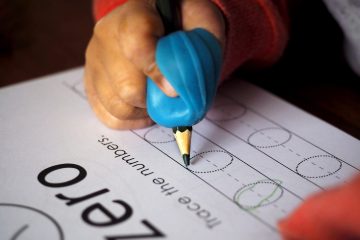Humans are visual learners. A study by the National Center for Biotechnology Information found that most of the information we absorb is visual. We also process images much, much faster than text —60,000 times faster! In addition, images are much easier to remember. Memory athletes use images to memorize huge quantities of information. For instance, in 2019, Ryu Song I memorized 4620 random digits in an hour. Images are truly powerful learning tools. This is why it’s so important for teachers to use images when teaching children.
Learning Styles
Researcher Neil Fleming suggested that people learn according to four sensory modalities:
- Visual learning
- Aural learning
- Reading/writing learning
- Kinesthetic learning
- Multimodality
So, you have people who learn primarily according to one modality, and others who learn using multiple modalities. Most people learn largely through visual means. These people need to see what they are learning and prefer things like graphs, diagrams, symbols, etc.
Some researchers believe 56% of people are visual learners. If you consider that many people are multimodal learners, and that most of us learn at least in some way visually, you can see how important it is to embrace visual teaching methods.
Visual Learning Initiatives
One not-for-profit organization, Aprendices Visuales (Visual Learning), based in Seville, Spain, was founded in 2012 to help implement visual teaching methods. Since its founding, the organization has been able to help over a million students through its apps and books. In 2016, the organization won the European Investment Bank’s Social Innovation Tournament, because of their success in providing a creative solution to teaching difficulties. Their success shows the extent to which visual teaching methods can help students.
Aprendices Visuales develops books and apps rich in images to teach children a wealth of different topics, from oral hygiene to math. Schools across Europe have used these books and apps and the curriculum the organization offers to help their students.
Traditionally, teaching is done verbally, with teachers talking about subjects and guiding students toward a desired end. What Aprendices Visuales has found is that by bringing in visual tools to help teachers, students are able to learn faster. For instance, the tools can be used to help students with independent study and learning, or in helping students to improve their reading habits.
Tools like storyboard are powerful ways of bringing visual elements to each lesson to deepen insight and make learning faster. These tools are especially important for children with learning challenges such as autism, and more broadly, they help further the goal of classroom inclusivity. Autistic children are more receptive to visual information than they are to other types of information.

Visual information is also much more engaging to children, and indeed, to all learners, than other types of material. Think about the importance of social media. Platforms such as TikTok and Instagram have become so important because people are more engaged when confronted with visual ways of imparting information, than when other methods are used.
Teachers, then, should think more deeply about leveraging visual information. Humanity has learned through images since the dawn of time, from drawings and paintings in caves to memory techniques used to pass on history and culture, and to modern times with people sharing stories on social media. Leveraging the power of visual information to better educate children makes sense.
Children are happier, more engaged, and more focused when visual information is used. Aprendices Visuales has succeeded in Europe because teachers have found that it draws in more learners and gets better outcomes than traditional outcomes.
Changing Schools
In Spain, Aprendices Visuales has worked with thirty schools to develop a holistic visual learning approach, for everything from the curriculum to the labels around the schools, using a visual schedule for the students, and other aspects of the school. These schools realized that it’s not enough to use visual learning inside the classroom, they have reimagined themselves in a more visual way across the school, and use visual images wherever possible.
The result of this experiment has been that the schools have become more inclusive, students are learning better and faster, and the children are happier overall. This makes a compelling case for the use of more visual elements in U.S. schools and classrooms.


